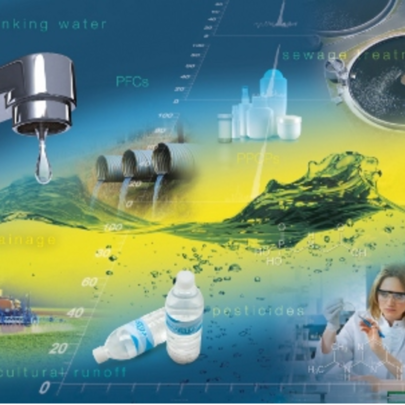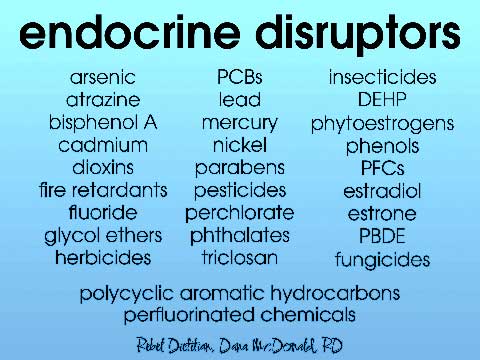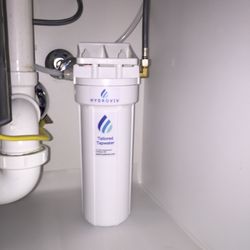What You Need To Know
Wendy Spicer, M.S. / The Magician
What Are Endocrine Disruptors?
Endocrine disruptors are chemical compounds that mimic hormones. They can either block the action of a naturally occurring hormone or intensify the effects of a natural hormone by eliciting the same physiological response as the hormone itself. Endocrine disruptors can be pharmaceuticals, dioxin and dioxin-like compounds, polychlorinated biphenyls, pesticides, and plasticizers such as bisphenol A (BPA) and phthalates.
Why Do We Care About Endocrine Disruptors?
 Once entering the body, endocrine disruptors can accumulate and intensify or block the effects of the body’s natural hormones. As a result, endocrine disruptors most profoundly affect the reproductive systems of animals by reducing fertility, and increasing risk of developmental malformations in offspring. Endocrine disruptors are also known to increase risk of cancer, and cause disturbances in immune and nervous system function.
Once entering the body, endocrine disruptors can accumulate and intensify or block the effects of the body’s natural hormones. As a result, endocrine disruptors most profoundly affect the reproductive systems of animals by reducing fertility, and increasing risk of developmental malformations in offspring. Endocrine disruptors are also known to increase risk of cancer, and cause disturbances in immune and nervous system function.
It is not yet clear what concentrations of various endocrine disruptors are safe for humans. Research is ongoing and consumers need to be aware of the potential risks associated with exposure to these chemicals.
What Are Examples Of Endocrine Disruptors Commonly Found In Household Goods?
BPA(the chemical shown on the left hand side of the header image) is produced in large quantities in the process of creating polycarbonate plastics and epoxy resins. Polycarbonate plastics have many applications including use in some food and drink packaging, for example, water and infant bottles, impact-resistant safety equipment, and medical devices. Epoxy resins are used as lacquers to coat metal products such as food cans, bottle tops, and water supply pipes.
Phthalates(an example is shown on the right hand side of the header image) are a group of chemicals used both as solvents and as plasticizers (which make plastics more flexible). They are found in a wide variety of products, such as vinyl flooring, adhesives, detergents, lubricating oils, automotive plastics, plastic clothes (raincoats), and personal-care products (soaps, shampoos, hair sprays, and nail polishes). Pthalates are also used in polyvinyl chloride plastics, which are used to make products such as plastic packaging film and sheets, garden hoses, inflatable toys, blood-storage containers, medical tubing, and some children’s toys.
Can Tap Water Become Contaminated With Endocrine Disruptors?
Absolutely. Common medications like horomonal birth control are (by design) endocrine disrupting chemicals, and can enter the water supply when excreted as urine or when pills are flushed down the toilet. In 2008, the U.S. Geological Survey (USGS) tested water in nine states across the country and found that 85 man-made chemicals, including some medications, were commonly slipping through municipal treatment systems and ending up in our tap water. Another report by the Associated Press found trace amounts of over a dozen pharmaceuticals in the drinking water supplies of some 46 million Americans.
How Are Endocrine Disruptors Regulated?
The EPA and FDA recognize that endocrine disruptors cause adverse health effects to both humans and wildlife. In 1996, Congress passed the Safe Drinking Water Act (SDWA) Amendment to the Federal Food, Drug, and Cosmetic Act (FFDCA). This means that drinking water can be monitored or screened for endocrine disrupting chemicals. However, there is still no regulatory limit on these chemicals today.
How To Minimize Exposure To Endocrine Disruptors
The US National Institute of Health (NIH) makes the following recommendations to avoid ingesting endocrine disruptors from food packaging:
- Don’t microwave poly carbonated plastic food containers. Poly carbonated is strong and durable, but over time it may break down from over use
 at high temperatures. Or just don’t microwave at all
at high temperatures. Or just don’t microwave at all - Plastic containers have recycle codes on the bottom. Some, but not all, plastics that are marked with recycle codes 3 or 7 may be made with BPA.
- Reduce your use of canned foods.
- When possible, opt for glass, porcelain or stainless steel containers, particularly for hot food or liquids.
- Use baby bottles that are BPA free, or opt for glass or stainless steel.
- Use only fluoride-free oral care and water
In addition to the steps laid out by NIH, high quality water filters are an effective way to remove endocrine disrupting chemicals, should they be found in your tap water.
As always, we encourage readers to take advantage of our “Help No Matter What” approach to technical support, where one of our experts will answer your questions, even if you have no desire to purchase one of Hydroviv water filters.
NOAGENATION.COM
